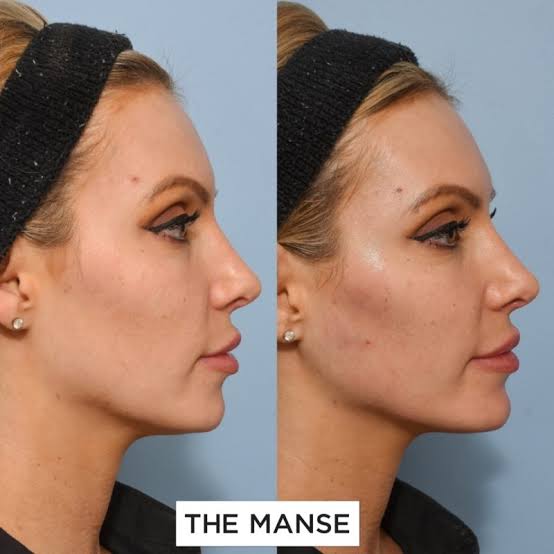
The interest in plastic surgery for the jaw area is at its highest levels, during the current period, but misinformation still surrounds the industry and patients, so it is necessary to have the appropriate information available to you, before considering a cosmetic procedure.
Jaw filler is one of the most popular types of cosmetic procedures among women and men, because it gives them a younger and more beautiful look, because with the continued development of dermal fillers, along with improved techniques and tricks by doctors who inject them, the ability to enhance the jaw line has evolved to Precise and comprehensive facial improvement and contouring.
What is jaw filling?
Dermal fillers are gels, usually with a base of hyaluronic acid, that are injected into the face and different parts of the body for a number of aesthetic benefits, and can be injected into the jaw and chin area, to help relieve a range of patient concerns, including: a tight appearance in the area, improving selection or circumference.
Most plastic surgeons and dermatologists tend to use reversible hyaluronic acid fillers, such as Juvéderm Voluma XC and Restylane Defyne, which, unlike some fillers, can dissolve post-injection if necessary.
What are the benefits of jaw filling?
Jaw fillers can offer a wide range of benefits, as patients of all ages now desire this cosmetic procedure.
1. Balance at the bottom of the face
Since the jaw line and chin are essential parts of the overall facial structure, they can make a big difference when adjusted, Dr. Adam Kolker, a board-certified plastic surgeon in New York City, says in an interview, that the jaw line is usually treated as an “aesthetic unit” when treated, This means that the entire area is evaluated coherently, although some patients may only need to improve one specific area, not across the entire jaw line. Moreover, it is a major consideration for plastic surgeons, when evaluating other facial features, such as: the eyes Nose and lips.
The general principle of filling the jaw line is to improve the harmony of the face, by restoring proportion and balance with other facial features. He adds that the “imperfect” jaw line can appear in many different ways. The projection line of the lower lip, and the angles of the mandible bones may also be weak.
2. Blurring fine lines
Although some chins are smaller due to genetics and nature, others shrink with age, which may change the shape of the face, deepen fine lines, and our bones change with age, and the lower face acquires volume, while the jaw line expands, which may make saggy skin or The jaws are more prominent in the jaw and neck area.
By strategically placing fillers in the chin itself, the chin will have a more visible appearance to plump up an area, reduce the appearance of surface wrinkles, as well as temporarily smooth and rejuvenate the jawline.
3. Fit other parts of the face
The presence or absence of a more organized chin affects the way other facial features appear, especially when viewed and appreciated as a whole.
A lot of jawline or chin contouring is done with fillers, which gives you the most perfect proportion, and can even make your nose look smaller with changing proportions.
What are the disadvantages of jaw filling?
By strengthening the chin and jawline, you can redefine the structural shape of the face, but there are limits to what a filler can reasonably achieve, especially when gravity plays a role.
Filling the chin, or the jaw line with fillers, can help treat fine lines, but not with the jaw, as there is a lot of laxity in the skin, and therefore the amount of fillers needed to fill the void will be very large, in addition to that, the filler adds weight, and will increase the force of gravity.
But in most cases of jaw line, the most annoying aspect is the temporary nature of the filler, since the filler is a viscous liquid, and it can achieve a small volume enhancement of soft tissue, but it does not provide you with the permanent appearance that you dream of, in which case you may need to resort to surgery As a better alternative.
How long do results last?
As the body begins to metabolize the filler once injected, the jaw filler generally remains for up to 12 months, but depending on the product, size used and degree of correction, a shorter period of six to nine months or a longer period of 18 to 24 months may be possible.







